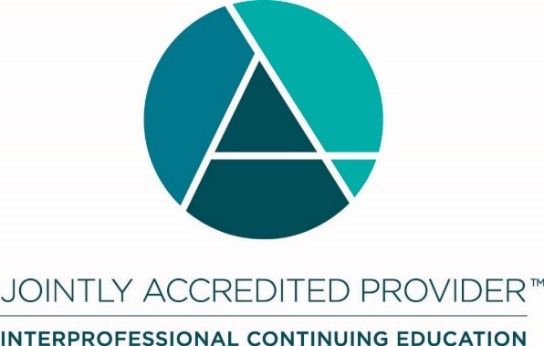
Cirrhosis Quality Collaborative (CQC) - Introduction to Quality Improvement
DESCRIPTION
A three-part on-demand webinar series introducing quality improvement, the Model for Improvement, as well as practical tools and concepts to participants seeking improvements in the Cirrhosis Quality Collaborative (CQC). Three sessions will cover topics including improvement theory, the Model for Improvement, measurement for improvement, developing improvement teams, testing changes using PDSA cycles and more. Each session will build on the previous session and participants are strongly encouraged to attend all sessions in order.
KEY TOPIC AREAS
Session I: Getting Started with Quality Improvement
Session II: Using the Model for Improvement to Improve
Session III: Measuring and Monitoring Improvement Projects
Release date: April 15, 2021
Expiration date: April 14, 2024
Previously recorded: September 22 and 29, 2020 and October 6, 2020
Time to complete each video: 60 minutes
CREDITS OFFERED
Continuing Medical Education (CME): For a maximum of 3.00 AMA PRA Category 1 Credits™
Continuing Education (CE): For a maximum of 3.00 Contact Hour
You may only earn one Continuing Education Credit type - either CME or CE
COMPONENTS
On-demand webinar series comprised of:
-Three 60-minute sessions in length
-Evaluation for CME or CE credit offering
DIRECTIONS
Click "Register" to activate the enduring material. Review all section tabs before you begin. Select session of interest. Complete all components to claim either CME or CE.
COPYRIGHT
All faculty in this activity have given their permission for publication ©2021 AASLD.
CONTACT INFORMATION
For questions on CME content or LiverLearning®, contact online_education@aasld.org
For questions on CE credit for this enduring material, contact Certificate@AmedcoEmail.com
Learning Objectives:
1. Distinguish quality improvement from other quality management approaches
2. Describe the Model for Improvement and its three key questions that drive improvement
3. Identify steps in setting up and managing quality improvement projects
4. Use PDSA cycles to test changes
5. Describe the principles of measurement for improvement
6. Identify tools to learn from and take action based on improvement data
This curriculum was developed for Primary Care Providers and any other healthcare provider interested in liver disease.
Hepatologists
Nurses
Nurse Practitioners
Physician Assistants
Fellows/Trainees
Primary Care Physicians
Other healthcare providers
CREDITS OFFERED
Continuing Medical Education (CME): For a maximum of 3.00 AMA PRA Category 1 Credits™
Continuing Education (CE): For a maximum of 3.00 Contact Hours
ACCREDITATION AND DESIGNATION STATEMENTS
Continuing Medical Education (CME)
The American Association for the Study of Liver Diseases (AASLD) is accredited by the Accreditation Council for Continuing Medical Education (ACCME) to provide continuing medical education for physicians. AASLD designates this enduring activity for a maximum of 3.00 AMA PRA Category 1 Credits™. Physicians should claim only the credit commensurate with the extent of their participation in the activity.

Continuing Education (Nursing Contact Hours)
In support of improving patient care, this activity has been planned and implemented by Amedco LLC and the American Association for the Study of Liver Diseases. Amedco LLC is jointly accredited by the Accreditation Council for Continuing Medical Education (ACCME), the Accreditation Council for Pharmacy Education (ACPE), and the American Nurses Credentialing Center (ANCC), to provide continuing education for the healthcare team. Credit Designation Statement – Amedco LLC designates this enduring material activity for a maximum of 3.00 ANCC contact hours for nurses. Learners should claim only the credit commensurate with the extent of their participation in the activity.
CLAIMING CME CREDITS
Physicians and other health care professionals for a maximum of 3.00 AMA PRA Category 1 Credits™ for this enduring continuing medical education material must completed by March 14, 2024.
CLAIMING CE CREDITS
Nurses for a maximum of 3.00 ANCC contact hours for this enduring continuing education material must be completed by March 14, 2024.
DISCLOSURE OF CONFLICTS OF INTEREST
AASLD requires all individuals who are in a position to control the content of an educational activity to disclose all relevant financial relationships with any commercial entity producing, marketing, re-selling, or distributing health care goods or services consumed by, or used on, patients. Disclosures are collected prior to the start of the educational activity. Any potential conflicts of interest that exist are resolved prior to implementation of the activity. All disclosures are made available and communicated to the leaner prior the activity beginning.
The enduring material organizers, faculty, reviewers and staff have reported the following disclosures:
Christina Clarke, MHA, BSc
Faculty/Organizer
Consulting: Improvement advisor (independent contractor) for the Cirrhosis Quality Collaborative
Independent Contractor: Improvement advisor (independent contractor) for the Cirrhosis Quality Collaborative
Audrey Davis-Owino, MRP
Organizer/Reviewer
Nothing to disclose
Fasiha Kanwal, MD, MSHS, AGAF, FAASLD
Organizer/Reviewer
Grant/Research Support: Gilead Sciences and Merck
Sheila Tynes, MHA, PMP
Organizer/Reviewer
Nothing to disclose
Michael Volk, MD, MSc, FAASLD
Organizer/Reviewer
Nothing to disclose
Dominique Clayton
AASLD Staff
Nothing to disclose
Melanie Stanton
AASLD Staff
Nothing to disclose
Sheryl Morgan
Amedco LLC Staff
Nothing to disclose
The opinions expressed in the educational activity are those of the faculty and do not necessarily represent the views of AASLD. Please refer to the official prescribing information for each product for discussion of approved indications, contraindications, and warnings.
DISCLAIMER
Participants have an implied responsibility to use the newly acquired information to enhance patient outcomes and their own professional development. The information presented in this activity is not meant to serve as a guideline for patient management. Any procedures, medications, or other courses of diagnosis or treatment discussed or suggested in this activity should not be used by clinicians without evaluation of their patients' conditions and possible contraindications on dangers in use, review of any applicable manufacturer's product information, and comparison with recommendations of other authorities.
Acknowledgement of Commercial Support: No commercial support was received for this enduring material activity.

